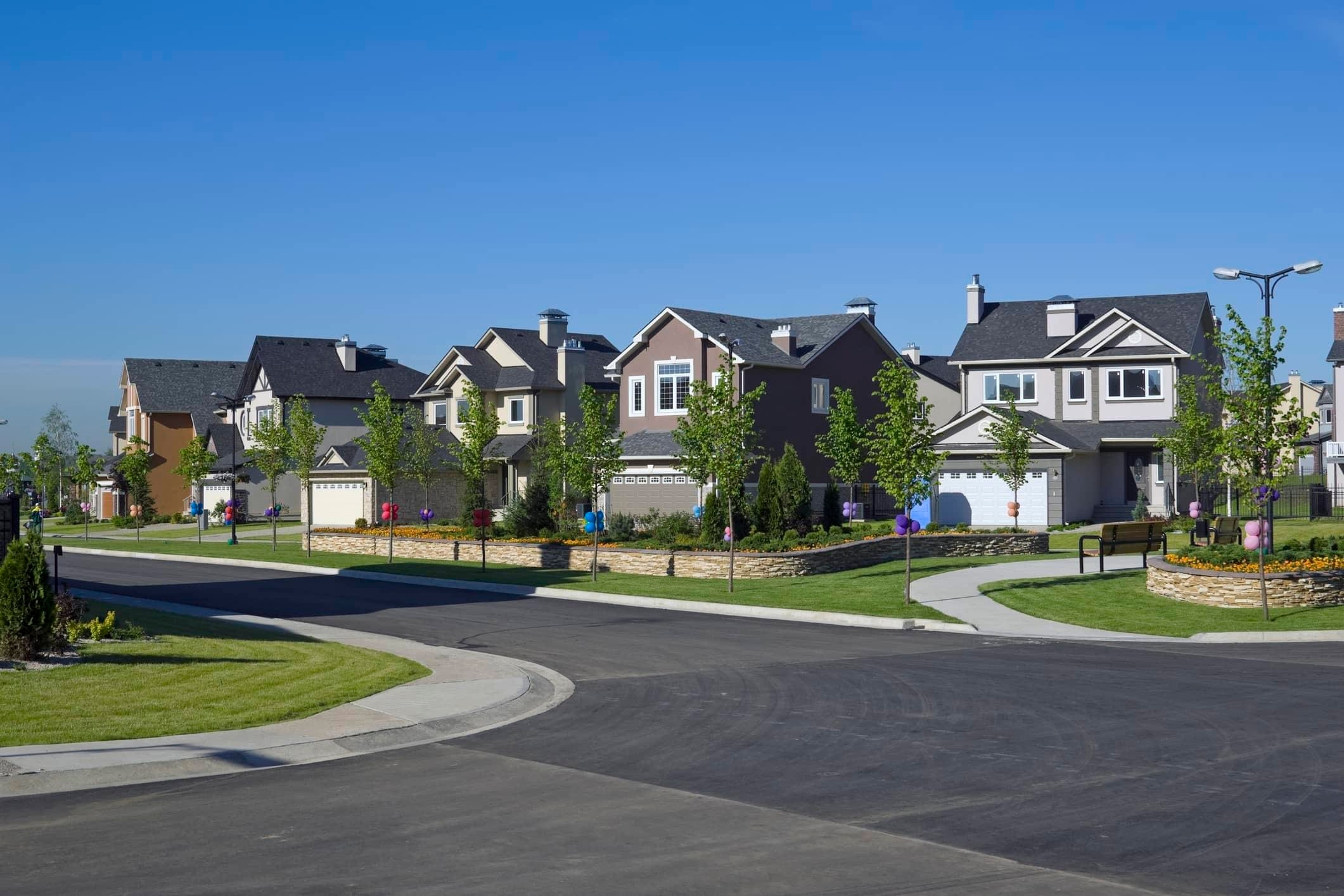How much income & down payment is needed for a $300k home?

Have you been wondering about how much income or how large of a down payment you’ll need to afford a house selling for $300,000? Well, the most honest answer is that every situation is different and depends on a lot of factors. Income level and the amount of money you can put down on a home will matter, but you’ll also have to consider a lot of other aspects. Mortgage rate, closing costs, taxes, insurance, and other costs will need to be a part of your budget.
Continue reading to learn more about affording a home worth $300k. However, you can also apply today to get a better idea of what you may get approved for. You can also check out our mortgage payment calculator or home affordability calculator to better understand what your costs could look like.
How much income do I need to afford a $300k home?
The amount of income you need to afford a $300k home will depend on several factors. Your credit score, down payment, debt-to-income ratio, and mortgage rate will all impact how much home you can afford. However, as a general rule, your monthly mortgage payment should not exceed 28% of your gross monthly income.
You should also consider other expenses, such as utilities, maintenance, and HOA fees, when determining how much home you can afford. Additionally, lenders may have their own requirements and guidelines, so it's best to speak with a mortgage professional to get a more accurate estimate based on your unique situation.
What are the down payment options for a home worth $300k?
There are several down payment options available for a $300k home. The most common options are as follows:
20% down payment options
This is the most traditional option and requires you to put down $60,000 as a down payment. With a 20% down payment option, you may qualify for a better interest rate and avoid paying private mortgage insurance (PMI).
10% down payment options
This option requires you to put down $30,000 as a down payment. With a 10% down payment option, you may still qualify for a conventional mortgage, but you may need to pay for PMI.
5% down payment options
This option requires you to put down $15,000 as a down payment. With a 5% down payment option, you may be eligible for an FHA loan or a conventional mortgage, but you will need to pay for PMI.
0% to 3.5% down payment option
If you are a first-time homebuyer or meet certain income requirements, you may be eligible for a USDA or VA loan that offers a 0% down payment option. You may also be eligible for an FHA loan that requires a down payment option of 3.5%.
It's important to note that the down payment options may vary depending on the lender and your individual circumstances. It's recommended to speak with a mortgage professional to discuss your options and determine the best down payment strategy for your financial situation.
What does the monthly mortgage payment look like for a $300k home?
The monthly mortgage payment for a $300k home will depend on several factors, such as the interest rate on your mortgage, the term of your loan, and the amount of your down payment. Assuming a 20% down payment and a 30-year fixed-rate mortgage with an interest rate of 6%, your monthly mortgage payment (including principal, interest, taxes, and insurance) would be approximately $2,024. *
However, if you put down less than 20% or have a higher interest rate, your monthly mortgage payment will likely be higher. For example, if you put down 5% and have an interest rate of 6%, your monthly mortgage payment (including PMI) would be approximately $2,440. **
It's important to keep in mind that your monthly mortgage payment is just one part of your homeownership expenses. You will also need to consider other costs, such as property taxes, homeowners insurance, HOA fees (if applicable), and maintenance and repairs. It's recommended to budget for these expenses as well to ensure that you can afford your home over the long term.
What can I do to make it easier to afford a home?
Buying a home can be a significant financial commitment, but there are several things you can do to make it easier to afford:
Tips to make a home more affordable
- Save for a larger down payment
The larger your down payment, the lower your monthly mortgage payments will be. Aim to save at least 5%-to-20% of the purchase price as a down payment. A 20% down payment will help you to avoid paying private mortgage insurance (PMI). However, it's still possible and may be preferable for some homebuyers to put down less money up front. - Improve your credit score
A higher credit score can help you qualify for a better interest rate on your mortgage, which can lower your monthly payments. Work on paying down debt, making all payments on time, and avoiding new debt to improve your credit score. - Choose a home that fits your budget
Don't overspend on a home that you can't afford. Stick to your budget and look for homes that fit your financial situation. - Consider a longer loan term
A longer loan term can lower your monthly mortgage payments, but keep in mind that you will pay more in interest over the life of the loan. Consider the tradeoff between a lower payment and paying more in interest. - Reduce other expenses
Look for ways to reduce other expenses to free up money for your mortgage payment. This could include cutting back on entertainment expenses, reducing your cable or cell phone bill, or reducing your transportation costs. Overall, it's important to approach homeownership with a realistic understanding of what you can afford and to take steps to make it easier to manage your mortgage payments over the long term.
Should I get pre-approved before applying for a mortgage?
Yes, it is generally a good idea to get pre-approved for a mortgage before applying for a mortgage. Getting pre-approved means that a lender has reviewed your financial situation and creditworthiness and has determined how much money they are willing to lend you. This process typically involves filling out a mortgage application, providing documentation such as tax returns and pay stubs, and authorizing a credit check.
If you’re ready to start your journey to a new home, you can complete a pre-approval application in less than 20 minutes. Get the process started with a mortgage pre-approval today.
Rate, Inc. is a private corporation organized under the laws of the State of Delaware. It has no affiliation with the US Department of Housing and Urban Development, the US Department of Veterans Affairs, the US Department of Agriculture, or any other government agency.
* Sample monthly Principal and Interest (P&I) payment of $2,024 is based on a purchase price of $300,000, down payment of 20.00%, 30 year fixed rate mortgage and rate of 6.000%/6.196% APR (annual percentage rate). Advertised rates and APR effective as of 5/17/23 and are subject to change. Above scenario assumes a first lien position, 780 FICO score, 30 day rate lock on a primary residence and are subject to change without notice. Subject to underwriting guidelines and applicant’s credit profile. Sample payment does not include taxes, insurance or assessments. Not all applicants will be approved. The actual interest rate, APR and payment may vary based on the specific terms of the loan selected, verification of information, your credit history, the location and type of property, and other factors as determined by Lender. Contact Rate for more information and up to date rates.
** Sample monthly Principal and Interest (P&I) payment of $2,440 is based on a purchase price of $300,000, down payment of 20.00%, 30 year fixed rate mortgage and rate of 6.000%/6.196% APR (annual percentage rate). Advertised rates and APR effective as of 5/17/23 and are subject to change. Above scenario assumes a first lien position, 780 FICO score, 30 day rate lock on a primary residence and are subject to change without notice. Subject to underwriting guidelines and applicant’s credit profile. Sample payment does not include taxes, insurance or assessments. Not all applicants will be approved. The actual interest rate, APR and payment may vary based on the specific terms of the loan selected, verification of information, your credit history, the location and type of property, and other factors as determined by Lender. Contact Rate for more information and up to date rates.




